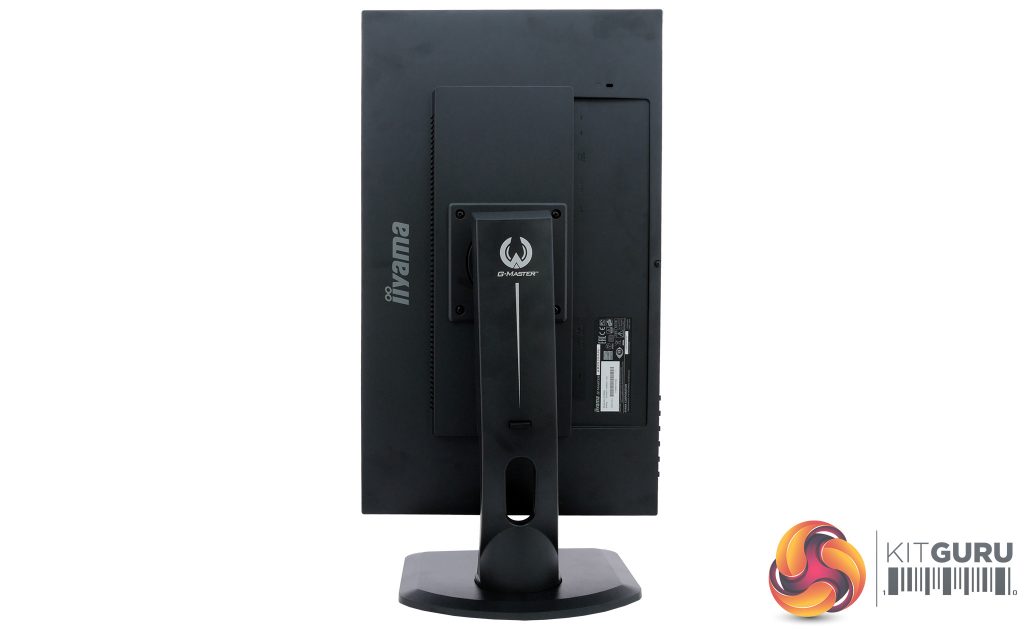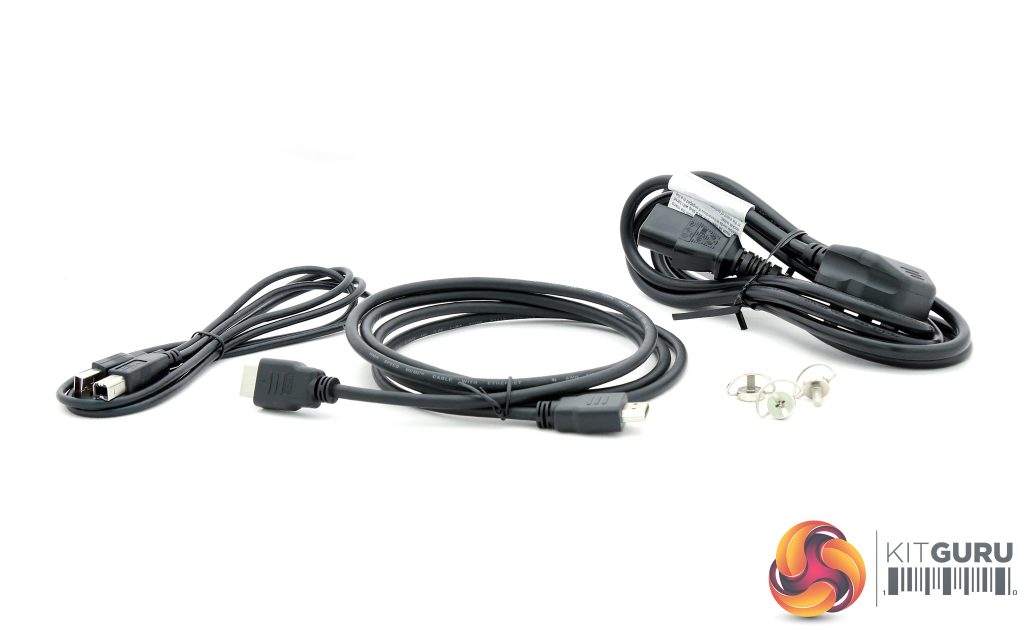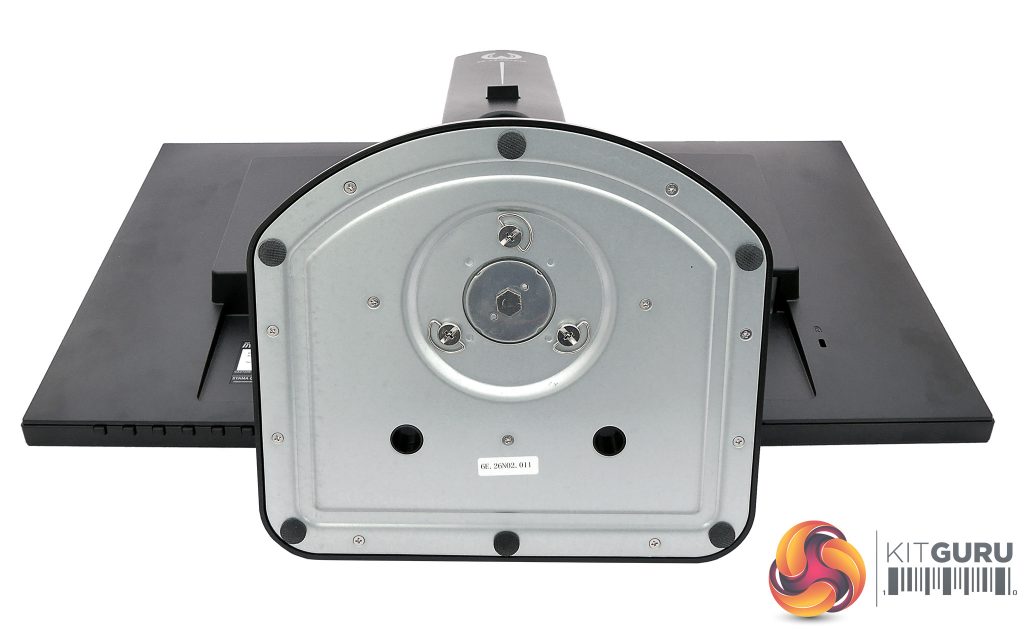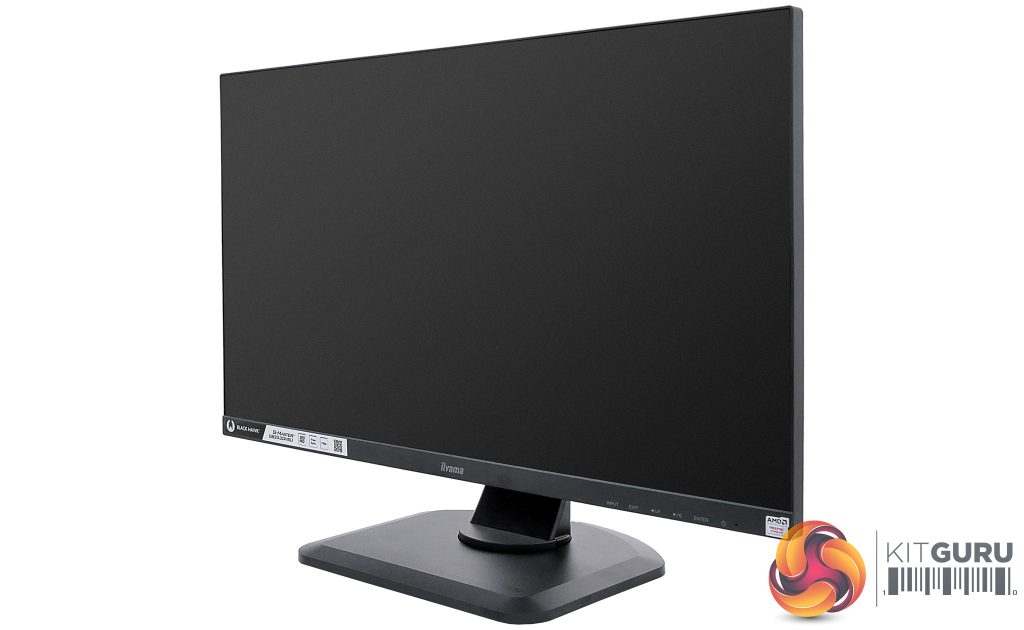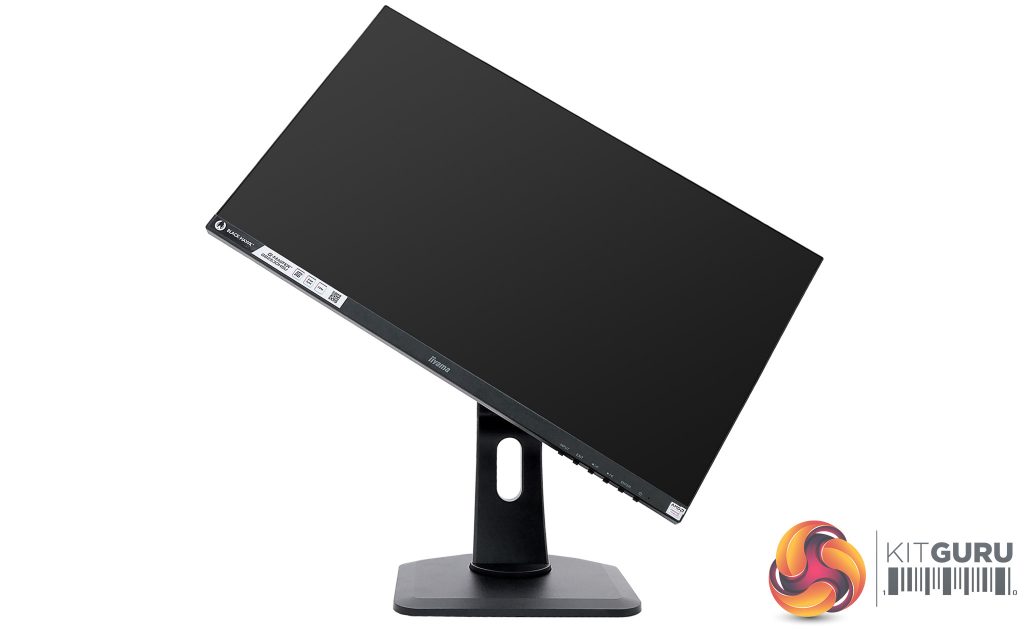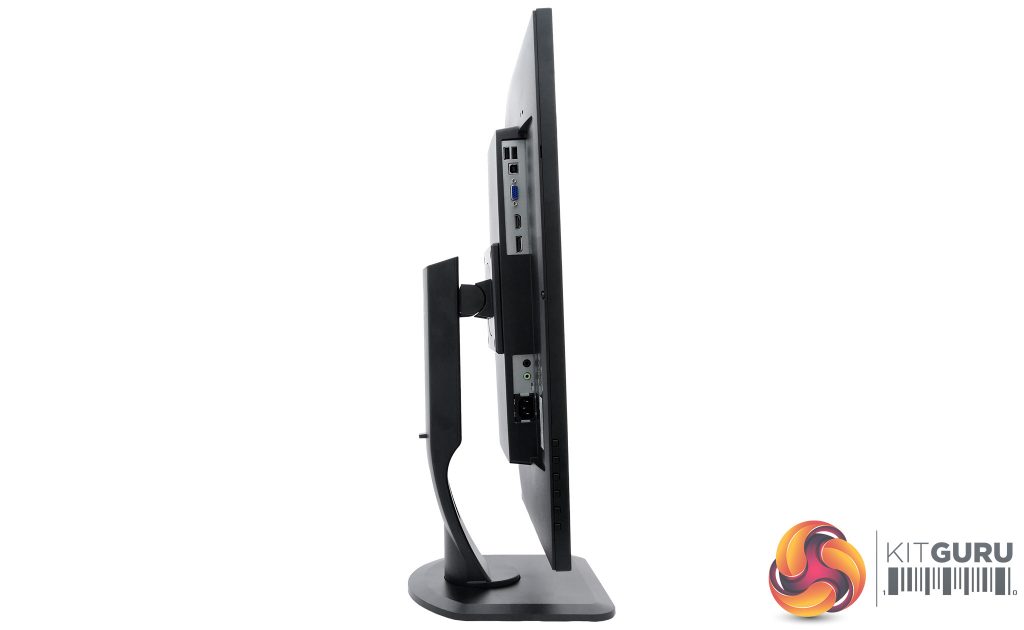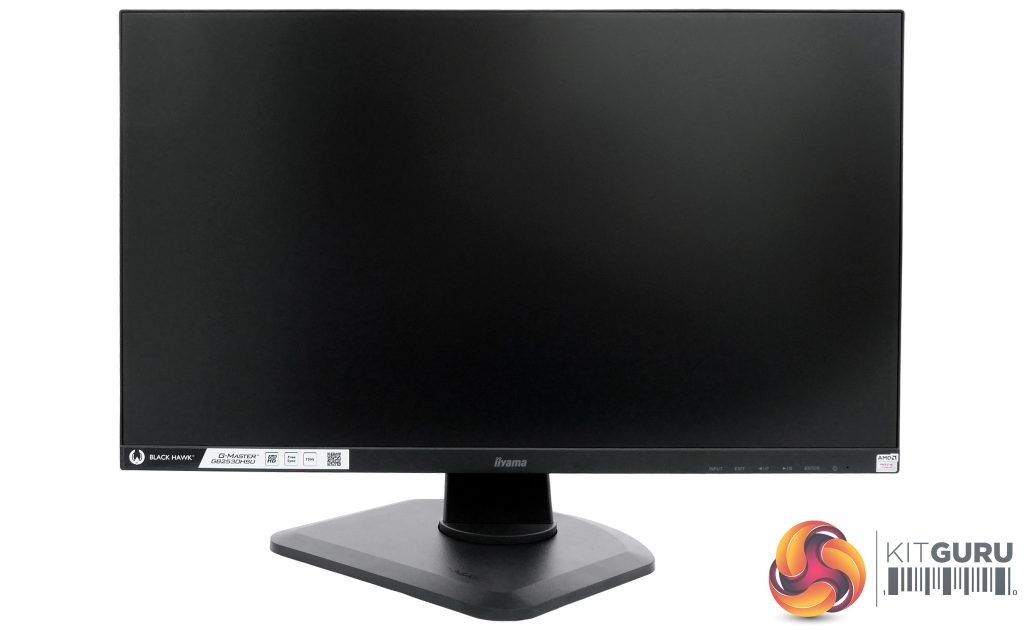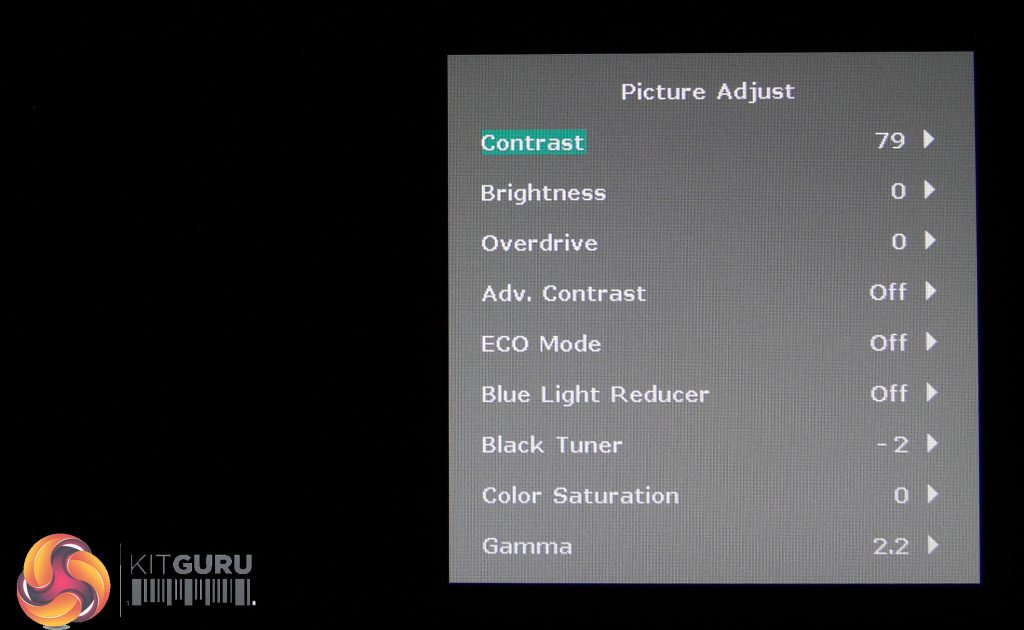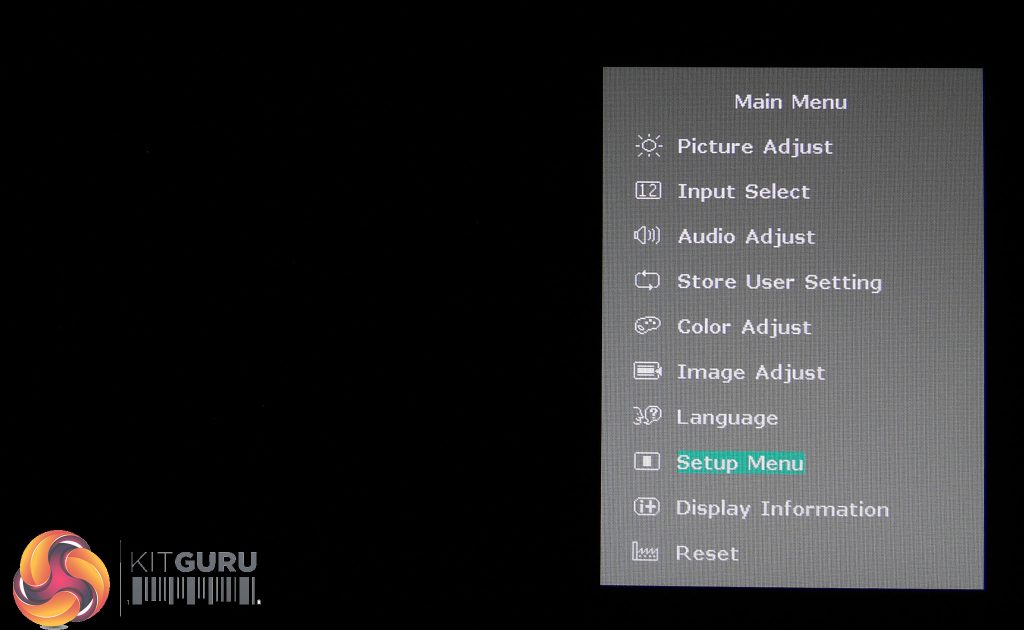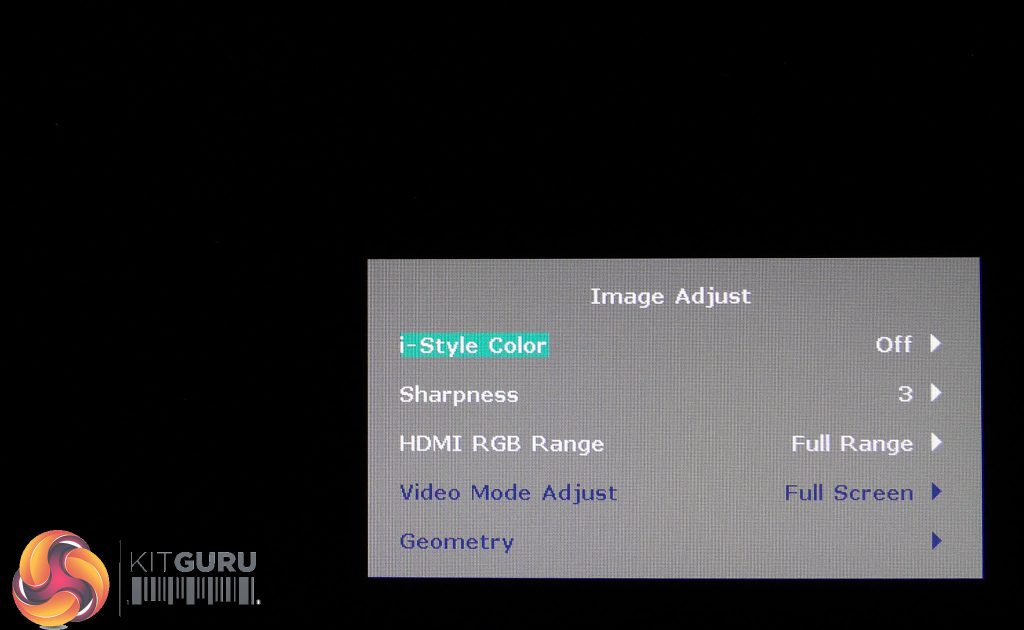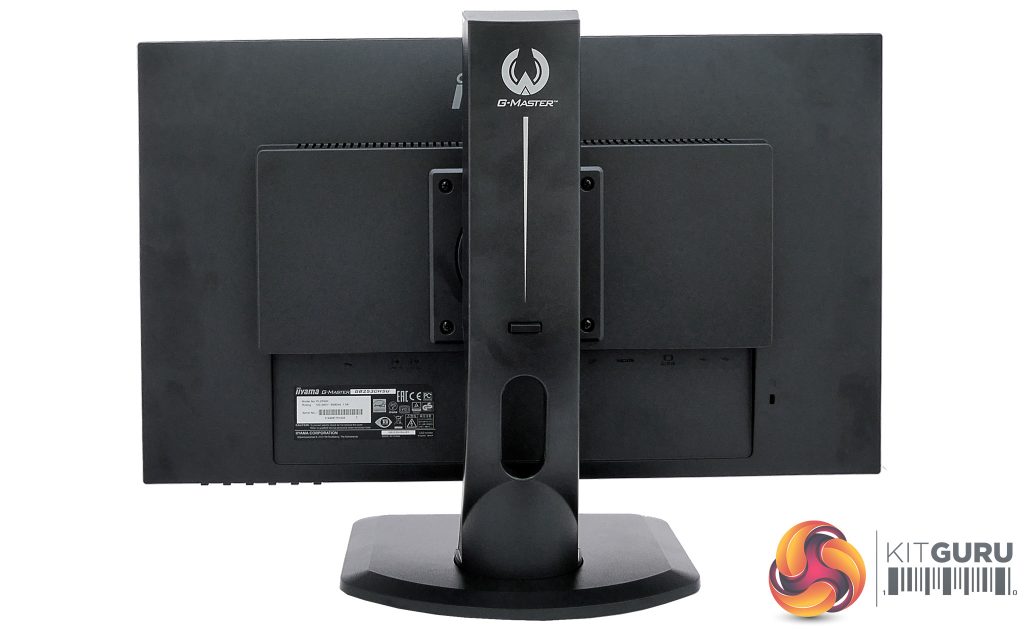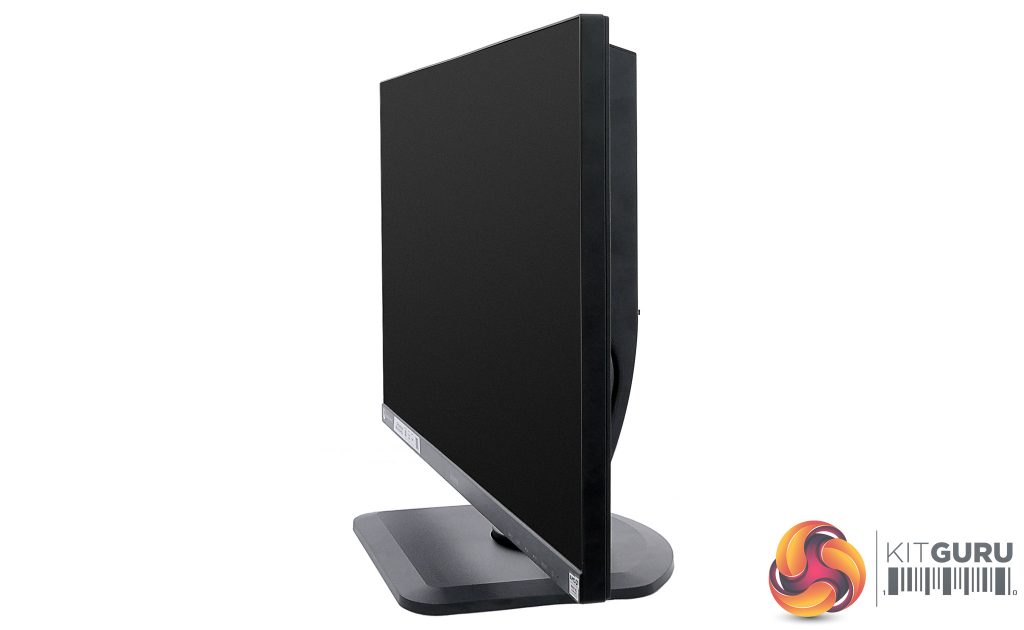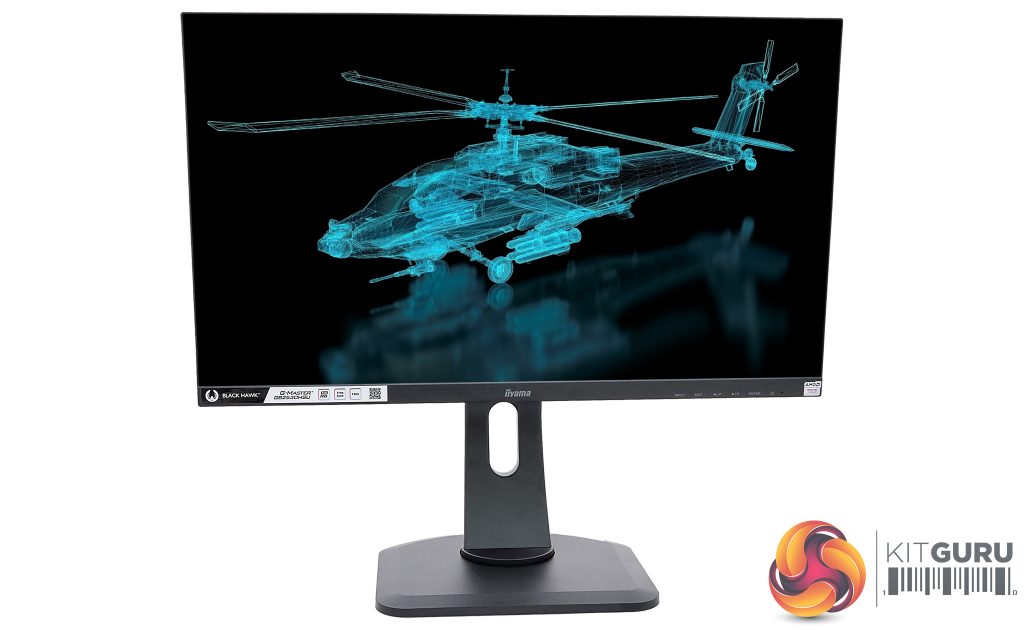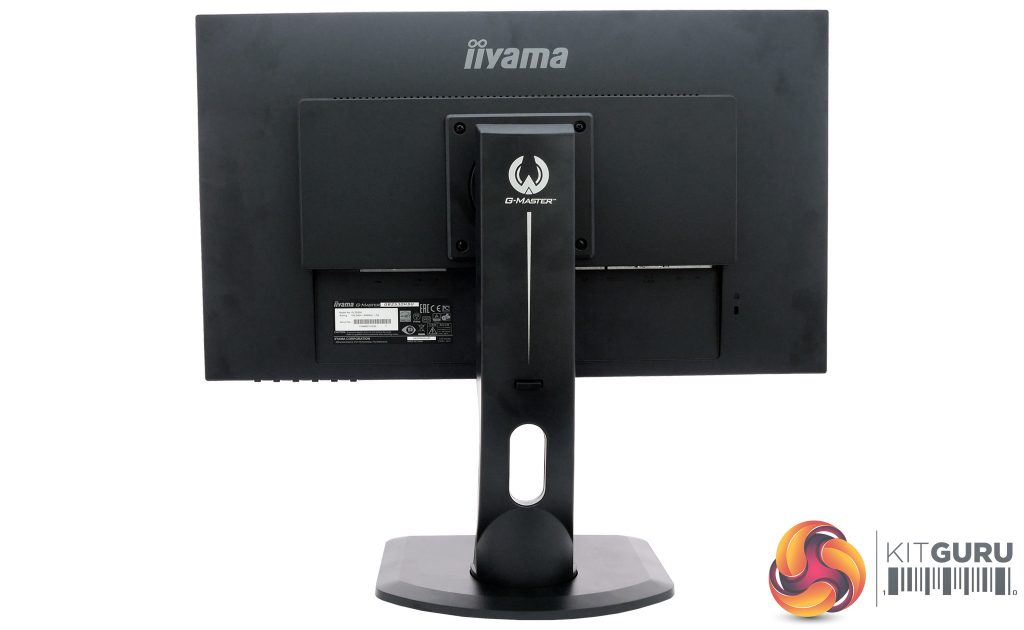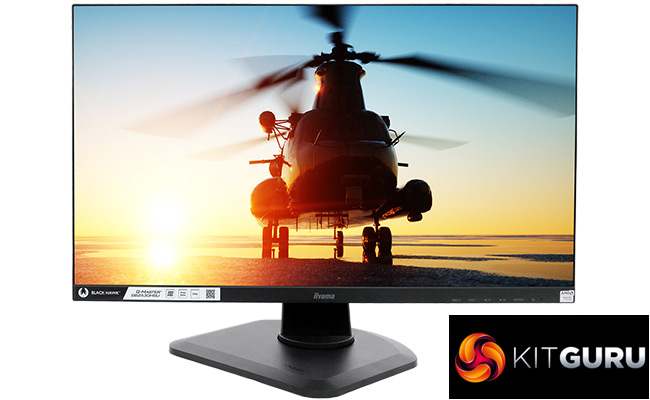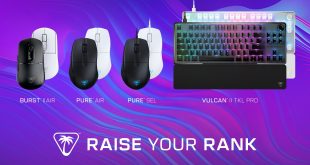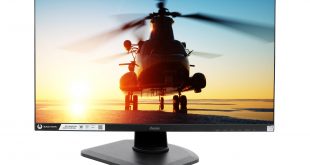
Much as we might all like to own the likes of the Asus ROG Swift PG27UQ 27in 4K/144Hz HDR Monitor, at over £2,000, this kind of display is way beyond most budgets. Luckily, the gaming display market has exploded in recent years, so now there is a model to suit pretty much every budget from a variety of brands.
Iiyama has a very broad range of affordable monitors and, for those with slim wallets, their G-MASTER GB2530HSU Black Hawk might be just the ticket, since it’s currently available for as little as £125. For this modest outlay you get a 24.5in, Full HD screen with a 75Hz refresh rate, AMD FreeSync support, slim bezels, a USB hub, and even a fully height-adjustable stand offering tilt, swivel and pivot! So is this Iiyama the bargain it at first appears?
Inevitably given the features and price of the G-MASTER GB2530HSU Black Hawk, it features a TN panel. While this type usually supports the quickest pixel response, it also tends to offer the worst colours, contrast and especially viewing angles. In this regard, IPS/PLS and VA panels will usually offer a far superior experience, so if this is important to you, it might be worth upgrading to a more premium option like the Iiyama G-MASTER G3266HS-B1 – which will also nab you a stunning 5000:1 contrast ratio and faster 144Hz panel, incidentally.
A few of the other specs aren’t too impressive either. With a maximum brightness of 250 cd/m2 (a value of luminance also known as ‘nits’) this may not be the best monitor for a sunny environment, there’s no curve to the panel for extra immersion, and the USB hub is of the 2.0 variety so should not be used for plugging in fast external storage. However, if this is the sum of our complaints for a £125 monitor then Iiyama may well still have a winner on its hands, so let’s see how it holds up.
Iiyama G-MASTER GB2530HSU Specs
- Screen size: 24.5″/ ~62cm
- Curved: no
- Native resolution: 1920 x 1080 pixels
- Bit colour depth: 8 (6bit +Hi-FRC)
- Refresh rate (Hz): 75
- Panel type: TN
- Contrast ratio (typical): 1000:1
- Brightness (cd/m²): 250
- Response time (ms): 1 (GTG)
- HDR: No
- Bezel (colour, finish): Black, matte
- Display inputs: 1x HDMI, 1x DisplayPort, 1x VGA
- Audio connections: 1x 3.5mm in, 1x 3.5mm out (headphone)
- Speakers: 2x 2W
- USB hub: 2x USB 2.0
- Tilt: Yes
- Height: Yes
- Swivel: Yes
- Pivot: Yes
- VESA mount: Yes (100 x 100)
- Power (plug type, internal/external): Kettle, internal
- Cables provided: Power, HDMI, USB
- Depth on desk (cm): ~22.5
- Weight (kg): 4
- Other: FreeSync
Price (retail): £125.00 inc. VAT at time of review
Iiyama G-MASTER GB2530HSU Black Hawk Design and Build
Unlike some of Iiyama's monitors that lack a height-adjustable stand, the G-MASTER GB2530HSU does not come pre-assembled. And actually, assembly is just a little bit on the inconvenient side, since you need to attach the provided stand to the chassis and stand with three thumb-screws, and carefully align the screw holes as this is not automatic.
On the other hand, naturally you’ll only have to go through this once, and at least assembly is fully tool-free as the aforementioned screws can be fully tightened by hand. Once assembled you’ll need to place the GB2530HSU on a stable surface, and release its height lock by pressing a large ‘button’ on the stand’s rear while putting pressure on the top of the chassis.
The assembled package feels surprisingly heavy for a display of this size. This seems to be indicative of the build quality, which is pretty good for such an affordable model. The matt plastics used throughout feel solid with little sign of flex or creak, except on some of the ventilation grill areas which suffer a little give under pressure.
We would call the design pedestrian, were it not for the attractively finished three-sided ‘bezel less’ surround which gives this monitor a touch of class beyond what its price point might suggest. Even if there is an ‘inner bezel’ which gives the lie to that aspiration – incidentally a flaw shared by the so-called ‘bezelless’ displays of nearly every other manufacturer, regardless of price – the overall look still gains a lot from this clever obfuscation, and the outer and inner bezels combined are less than 5 mm thin, which is quite impressive.
It’s a pity, then, that the G-MASTER GB2530HSU’s looks are brought down by the somewhat cluttered bottom bezel, which is adorned with the unexciting Iiyama logo and button labels. The stand’s base also gives a rather chunky impression and is severely lacking in elegance. But really, these are minor nitpicks for a monitor costing under £130.
Iiyama G-MASTER GB2530HSU Black Hawk Adjustability and Connectivity
As already mentioned, the adjustability on Iiyama’s G-MASTER GB2530HSU is pretty great. The base might be unattractive but provides an incredibly solid experience. Height adjustment is a tad noisy and on the stiff side but otherwise issue-free, and will raise the bottom bezel 6 cm to 18.5 cm from your desk. The only thing to beware of is that pushing the screen all the way down will lock it into place again, meaning you need to re-release the height lock.
Naturally tilt is on-board, with the usual range of 22° up and 5° down, along with very generous pivot that lets you put the screen at almost 170° to the viewing position. Last but not least, pivot is surprisingly usable for a TN-type display, and also makes it easy to plug in all the required cables.
This brings us nicely onto connectivity, which is pretty much as you might expect for this class of display. Starting on the left, you’ll find the twin USB 2.0 outputs, which are handy for plugging in a keyboard and mouse. This is followed by USB-in, which you need to connect to your computer using the supplied cable.
Next up are the video connections, and unlike on its more expensive Red Eagle G-MASTER GB2560HSU, Iiyama has opted to add a good old VGA port, meaning those with older gaming laptops will be able to use this gaming monitor without any pesky adapters.
Of course digital video is also catered for, with the usual HDMI and DP (DisplayPort) combo. Thankfully, both of these do support FreeSync, so owners of an AMD graphics card won’t need to worry about which one to use for a tear-free gaming experience.
Moving on to the other side of the stand, we have a 3.5mm line-out jack to connect headphones or external speakers, and a line-in for analogue audio transmission.
Last of all is the kettle-type power connector, since the G-MASTER GB2530HSU Black Hawk features a built-in power supply rather than the clunky external bricks we’re not so fond of.
Iiyama G-MASTER GB2530HSU Black Hawk Controls and OSD
With ever more monitors switching to the easy-to-use joystick OSD control method, including Iiyama’s own G3266HS-B1, we were a little saddened to see the more traditional buttons on its GB2530HSU.
They’re well-spaced and clearly labelled, but these labels will be practically invisible in a dark environment, and to acerbate matters even further they’re all the same size and shape, making it too easy to accidentally turn off the display when you were only trying to press Enter.
On the positives side, all these buttons offer a decent click and solid action, leaving you in no doubt to whether you’ve pressed one. And while the small blue power LED nested next to the power icon on the bottom bezel cannot – as far as we could tell – be turned off, at least it’s fairly unobtrusive.
The first control on the G-MASTER GB2530HSU Black Hawk is labelled Input and this does what it says on the tin, letting you switch between its three video inputs or Auto, which picks the input with an active signal. Next is Exit, which does exactly that while navigating OSD menus but also acts as a direct shortcut to a very extensive selection of image presets, including: Standard, Sport Game, FPS Game, Strategy Game, Text, and no less than three User modes. We will discuss some of these further in the Image Quality and Gaming sections of this review.
After Exit we have Left, which also offers three ECO modes, and Right, which gives quick access to the volume, with 50 as its default value. Last and most importantly we have Enter, which also gives access to the main OSD. We must say, Iiyama has really surprised us here with a very unusual menu. It’s a minimalist affair that consists simply of a single list for each section, which makes for a clean look albeit with lots of entries.
In Picture Adjust, you’ll find controls for Contrast, Brightness and Overdrive, the latter of which offers a few more presets than the usual normal/fast/faster. Instead Iiyama here offers Off/-2/-1/0/+1/+2. This is a little confusing as the user might be left wondering what the difference is between Off and the default 0, or why a setting that traditionally increases something (the overdrive applied to the liquid crystals that make up an LCD panel) even has minus figures to begin with…
Moving past this oddity, we assume Adv. Contrast refers to that old chestnut Dynamic Contrast. Next up we have ECO Mode, also accessible directly from the Left control button. This is followed by the self-explanatory Blue Light Reducer, which – despite sounding like the corny title of a bad 80s science fiction flick, just offers three modes to reduce the amount of potentially harmful blue light the monitor emits.
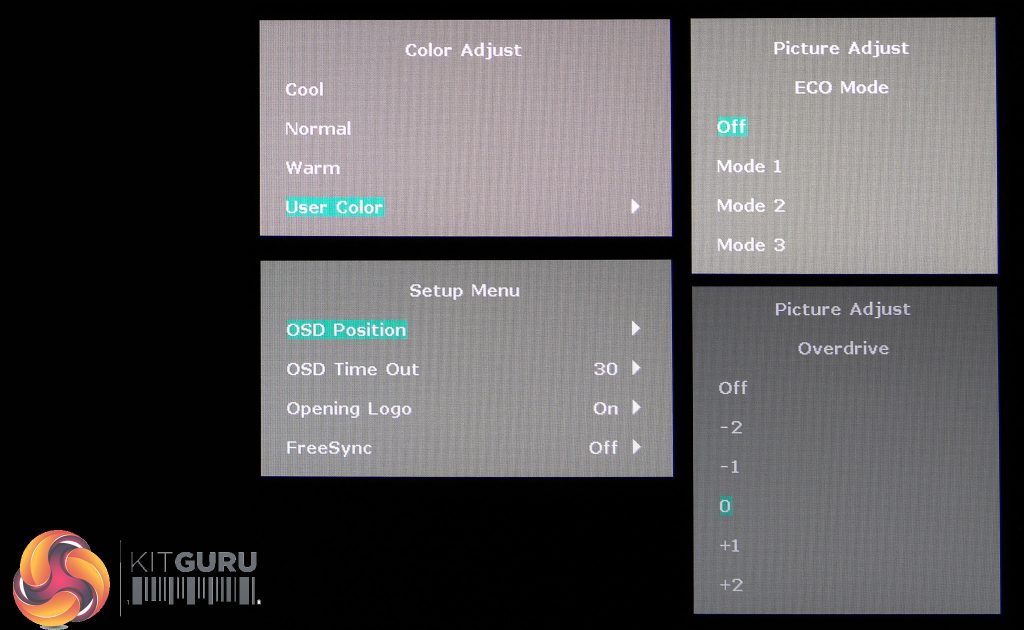
This is followed by a setting that should have been closer to Contrast, namely the Black Tuner. As its name suggests this can lower or raise the screen’s black level, giving you ‘deeper’ blacks at the cost of dark detail, or washing out the display but ensuring you can see even the darkest grey pixels. This can give gamers a competitive edge by letting them see hidden enemies, and while in theory a great display should not need such trickery (and some might suggest a gamer worth their salt shouldn’t be reduced to it), we are talking about a £125 TN-type panel here, so it’s nice to see.
For the G-MASTER GB2530HSU Black Hawk in particular, it helps to combat the panel’s washed-out, milky appearance out of the box. We found setting Black Tuner at -1 improved visual contrast without crushing any dark detail, while knocking it down to -2 still kept nearly everything intact but made blacks look… black, rather than grey. In fact, we discuss the shocking difference this setting makes in the Image Quality section of this review.
Similarly, if you want a little more vibrancy to colours which tend to fade quite quickly on this TN panel, it’s definitely worth nudging the Color Saturation slider up a bit; we found that anything between seven and eleven gave everything just a bit more punch without making colours appear too garish – and it improved colour performance across the board! Last on the Picture Adjust list is Gamma, which can be set at either 1.8, its 2.2 default, or 2.6. We’d recommend leaving well enough alone in this case.
Moving on to the other main menus in the OSD, we have the aforementioned Input Select; Audio Adjust which lets you adjust volume, mute/unmute and choose the digital audio source; and Store User Setting for the three user modes (did this really require a separate menu entry Iiyama?).
Color Adjust is where you can select between colour temperatures using our least favourite naming of Cool, Normal or Warm – nothing wrong with this for the average user but please include colour temperature figures too – or you can tinker with RGB under User.
Image Adjust contains “i-Style Color”, Sharpness, and console-oriented settings like HDMI RGB range, which should always be set to full when using the G-MASTER GB2530HSU as a PC monitor. Other menu titles like Language, Display Information and Reset are self-explanatory, but a last honourable mention must go to Setup Menu, where you don’t just control the OSD position and time-out, but also whether the Iiyama logo appears when the monitor starts up – and, though we have no idea why it’s hidden here, whether you would like FreeSync to be turned on or off. We would strongly suggest Iiyama keeps this near the Black Tuner, instead, or even creates a dedicated Game menu. This is, after all, sold as a gaming monitor.
Iiyama G-MASTER GB2530HSU Black Hawk Power Consumption
Out of the box, this little Iiyama consumes around 16.5W, while pushing 226 cd/m2 (also known as nits), just a tad below its 250 maximum. To achieve that maximum we moved the brightness slider from its default 80 to 100, which gave us 255.5 nits while drawing up to 18.5W. It’s nice to see these figures all fall below Iiyama’s official spec, which mentions power consumption of 19.6W.
Achieving our preferred calibration target of 120 nits required sliding Brightness down to 10, which also lowered power draw to 11W – incidentally lower than the least bright ECO setting. Meanwhile, after knocking it all the way to zero our G-MASTER GB2530HSU was still putting out 104 nits, which is quite a bit higher than we like to see for a monitor’s minimum brightness level, especially for anyone with tired eyes working in a dim environment. Concordantly, consumption didn’t change much at 10.5W.
Iiyama G-MASTER GB2530HSU Black Hawk Speakers
We really were not expecting much from this Iiyama’s speakers. After all, we’re talking about 2W efforts on an extremely affordable monitor here, and we’ve seen some brands produce terrible results on far more expensive models (yes we’re looking at you, Acer Predator XB241H). However, the audio by the G-MASTER GB2530HSU is actually pretty decent – if you’re happy with your tunes and entertainment having as much bass as a piccolo, that is.
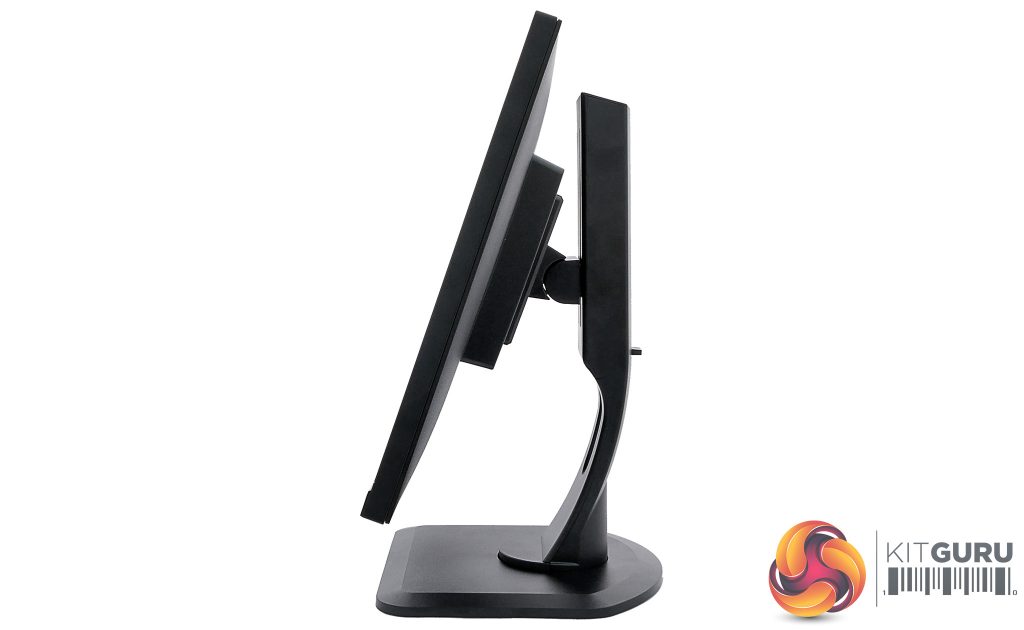
We measured 70dB at the monitor’s bezel, meaning that depending on your sitting position your ears will get around 65dB. There’s also very little distortion at high volume, and a decent amount of overall clarity. Were it not for the distinct lack of oomph we might even say these were acceptable for undemanding entertainment but, as is, only the occasional YouTube video need apply.
Noise guide:
10dBA – Normal Breathing/Rustling Leaves
20-25dBA – Whisper
30dBA – High Quality Computer fan
40dBA – A Bubbling Brook, or a Refrigerator
50dBA – Normal Conversation
60dBA – Laughter
70dBA – Vacuum Cleaner or Hairdryer
80dBA – City Traffic or a Garbage Disposal
90dBA – Motorcycle or Lawnmower
100dBA – MP3 player at maximum output
110dBA – Orchestra
120dBA – Front row rock concert/Jet Engine
130dBA – Threshold of Pain
140dBA – Military Jet takeoff/Gunshot (close range)
160dBA – Instant Perforation of eardrum
Iiyama G-MASTER GB2530HSU Black Hawk Image Quality and Panel Performance
To start things off, we perform an overall, visual assessment of the monitor on our test bench. This includes judging general performance under a variety of scenarios, and checking for issues such as damaged pixels or backlight bleed.
For a more detailed and objective evaluation, we use an Xrite i1 Display Pro with DisplayCAL and CalMAN Colour Checker software to assess the panel’s contrast and colour performance, uniformity, and image quality. Please keep in mind that these results should only be used as a guideline: not only is every panel different to some extent, but a number of factors can affect measurements such as environment temperature, display warm-up time, and many others.
Initial performance from the G-MASTER GB2530HSU Black Hawk was about what you would expect from a budget TN panel. With brightness set to its 80 (225 nits) default, the whole picture looked severely washed out, with dull, pale colours and blacks that seemed more light grey than anything approaching inky.
In the positives column, uniformity appeared visually decent with no obvious backlight bleed, and the matt screen finish and non-reflective bezels meant there were minimal distracting reflections to detract from your gaming experience. And while vertical viewing angles also display the characteristic TN weakness with strong colour and contrast shift, horizontal viewing was on the good side of average for this panel type.
These findings were borne out in our measurements, with one of the worst contrast ratios we’ve ever seen; a horrific 200:1. Scrap that, this is not one of the worst contrast ratios but the worst, full stop, and this is purely due to a very poor black level of 0.593 at default settings (lower is better; most quality IPS or VA monitors give around 0.13 on average). And yes, we measured a few times with different software to ensure this wasn’t a fault with our setup or equipment.
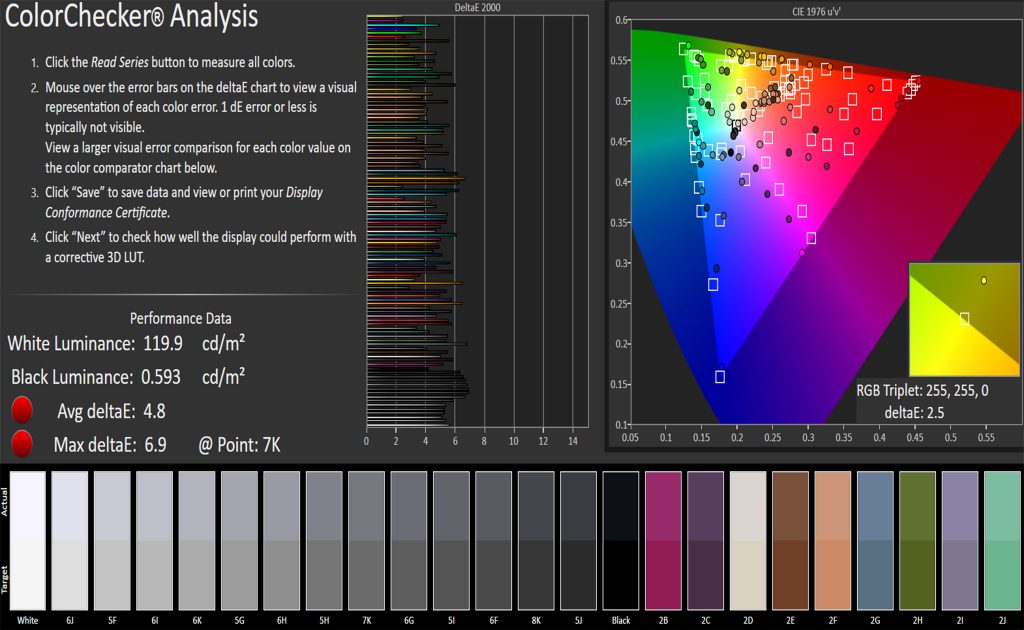
Yet before we bemoan the irony of the Black Hawk moniker on a screen that can’t even do blacks, there is a way to resolve this. In fact, as already mentioned in the OSD section, there are some settings you can tweak to easily fix a lot of the out-of-the-box issues with the G-MASTER GB2530HSU Black Hawk. For black level and contrast, that’s the Black Tuner.
Setting this to -1 improves the situation already, while -2 still doesn’t result in noticeable black crush but really adds some punch to those blacks, bringing them up to the level of a half-way decent IPS panel. Indeed, in this mode we measured a far more impressive 864:1 thanks to a black level of 0.14 – still not class-leading but good enough for a super-affordable monitor.
Similarly, to liven up the faded, dull colours, just pop the Color Saturation slider up to around 7 or a little higher, and things will start to look a lot more vibrant while avoiding oversaturation. Now it’s true that with many monitors we would not necessarily recommend these kind of tweaks as they might negatively impact colour quality – but in the case of the GB2530HSU, these two simple tweaks significantly improve every single aspect or the monitor’s image quality. Including not just contrast and black level, but gamma, colour accuracy, and even gamut coverage!
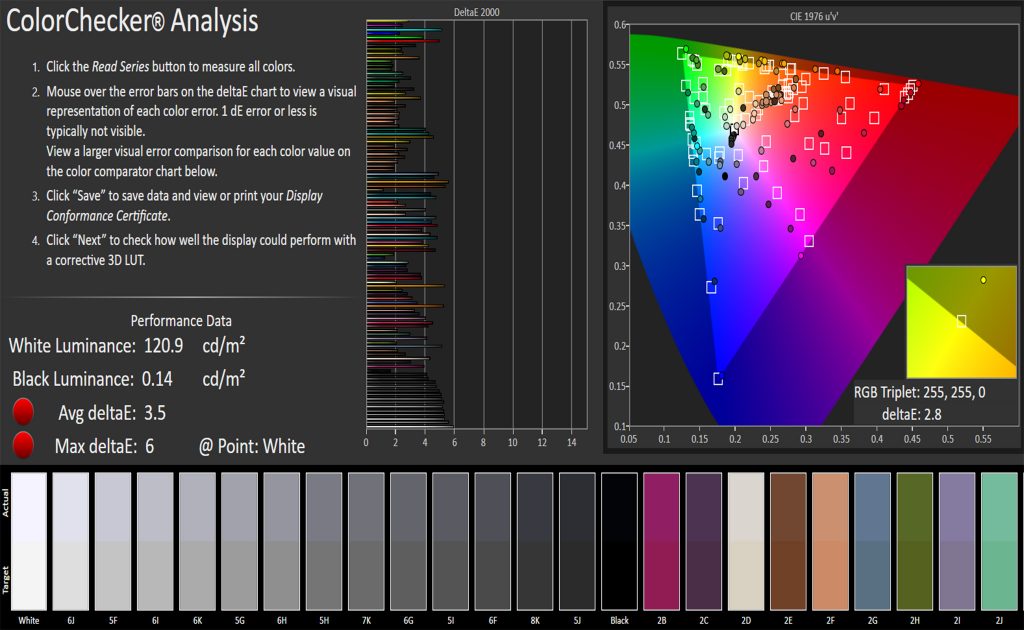
For example, sRGB coverage went from 88.6 percent default to a much more acceptable 92.7 percent on these settings. They improved gamma from 1.92 to 2.1, which is closer to the 2.2 standard for SDR monitors. And Delta E 2000 values went from an average of 4.8 and maximum value of 6.9 out-of-the-box to a far better dE 3.5 average and mere 6 maximum, which are figures good enough for a bit of hobbyist photo editing (not that we would ever suggest doing so on a budget TN monitor if you have the choice). Incidentally, where Delta E is concerned, results below dE 3 tend to be indistinguishable to the untrained eye, while below 1 is as near to perfect as makes no difference.
It’s just a pity that no easy tweak could fix the G-MASTER GB2530HSU’s colour temperature, which remained too high at around 6950K, quite a bit up from the 6500K ‘daylight’ ideal. However, the biggest shame is that Iiyama didn’t apply better settings out of the box, as just a few different settings turn its GB2530HSU from a flop into a very competent performer for the price.
Iiyama G-MASTER GB2530HSU Gaming
As discussed in the Image Quality section of this review, the first thing to do with your G-MASTER GB2530HSU when about to play some games (or movies, for that matter), is to set the Black Tuner to at least -1, preferably -2 unless playing a competitive FPS. Next knock Color Saturation up to at least 7, or higher depending on how rich you like your colours. After this we can worry about the usual suspects.
Aside from the large selection of Game presets which are mostly redundant due to their poor levels of image quality, this Iiyama offers a very handy selection of three customisable User Modes. Just enter your favourite settings including the above tweaks, select Store User Setting from the OSD, and from then on they’re no more than a few button presses away.
The only potentially worthy preset contender is FPS Game, which could be useful for bringing out hidden dark detail – just be aware that it washes everything out severely, so you lose a lot of image quality and immersion.
Naturally, at this kind of price point there are no motion blur reduction technologies, such as the black frame insertion found on the MSI Optix MPG27C. However, TN panels tend to be naturally quicker than their IPS or VA counterparts, and we didn’t experience any motion issues or ghosting.
There’s no denying that a 75Hz panel refresh isn’t as tantalisingly smooth as one of those fancy 144Hz or even 240Hz gaming monitors out there, but the important thing to remember is that it still provides a superior experience to the average 60Hz display, and it will hurt your wallet a lot less.
And while we’re on the topic of budget, if you don’t have a £500 graphics card in your PC or gaming laptop, it’s also a lot easier to push high levels of detail at a more modest refresh rate and Full HD resolution. Unfortunately, since our test system uses an Nvidia card we could not check the AMD-only FreeSync features of the GB2530HSU, but Iiyama claims a decent 48-75Hz range.
Iiyama G-MASTER GB2530HSU Closing Thoughts
Once a few easy adjustments have taken care of the G-MASTER GB2530HSU Black Hawk’s frankly terrible default contrast and image quality, what’s left is a diamond in the rough. If you’re after a no-frills monitor for gaming on a budget, this offering does a really competent job overall.
Obviously you can’t expect the best of everything for this price. Due to its use of a TN panel, viewing angles are limited, and its 75Hz refresh won’t exactly blow your socks off – nor will its mediocre 2W speakers. However, its Full HD resolution looks reasonably sharp on a 24.5in panel, image quality is decent once set up properly, and the fully adjustable stand and three-sided bezel-less design are very pleasant surprises on a £125 monitor. Iiyama has even included a USB hub, albeit of the older 2.0 variety.
If you’re prepared to spend a little more there is a wide selection of monitors available that offer higher resolution, a larger screen size, or a better panel type – or even all three! A nice example is the 32in AOC Q3279VWF, which gives you a 2560 x 1440, 75Hz VA-type panel for just under £200 (although you do lose out on the GB2530HSU’s lovely adjustability and three-sided bezel-less design). But not everyone can afford even this much extra outlay, and that’s why the GB2530HSU comes recommended as a bit of a budget champion.
The Iiyama G-MASTER GB2530HSU Black Hawk is available for £124.98 HERE.
Pros:
- Great value.
- Fully adjustable stand including pivot.
- 75Hz panel with FreeSync support over HDMI & DP.
- Decent image quality (after some tweaks).
- Three-sided ‘bezel-less’ design.
- Good build quality.
- Two-port USB 2.0 hub.
- Programmable user presets.
Cons:
- TN panel has the usual limitations.
- Truly awful contrast at default settings.
- Dull, washed-out colours at default settings.
- No advanced gaming features.
KitGuru Says: Iiyama has produced a little budget gem here, with nice surprises such as a fully adjustable stand and three-sides ‘bezel-less’ design. Though it requires a little polish before showing its shine, if you’re after a decent gaming monitor on a strict budget, you could do far worse than the G-MASTER GB2530HSU Black Hawk.
Be sure to check out our sponsors store EKWB here
 KitGuru KitGuru.net – Tech News | Hardware News | Hardware Reviews | IOS | Mobile | Gaming | Graphics Cards
KitGuru KitGuru.net – Tech News | Hardware News | Hardware Reviews | IOS | Mobile | Gaming | Graphics Cards



